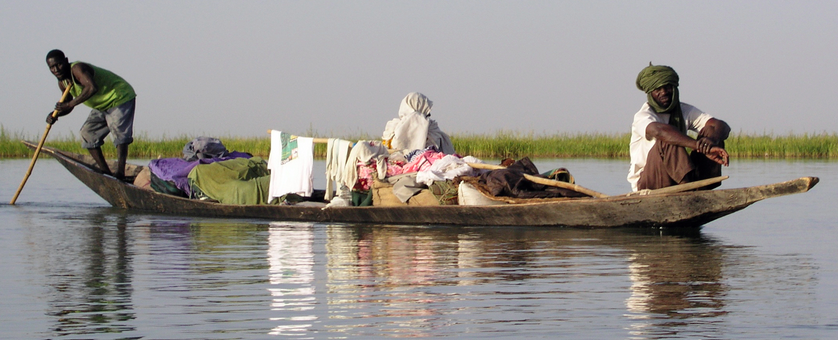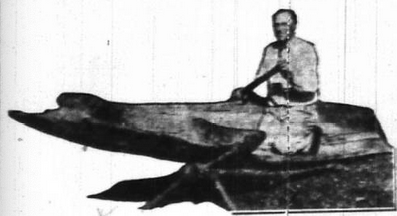Encyclopedia Dubuque
"Encyclopedia Dubuque is the online authority for all things Dubuque, written by the people who know the city best.”
Marshall Cohen—researcher and producer, CNN
Affiliated with the Local History Network of the State Historical Society of Iowa, and the Iowa Museum Association.
PIROGUE: Difference between revisions
(Created page with "left|thumb|300px|African piroquePIROGUE. Pirogue, in its simplest form, is a dugout made from one log, but also a number of more elaborately fashioned b...") |
No edit summary |
||
| Line 1: | Line 1: | ||
[[Image:pirogue1.png|left|thumb|300px|African piroque]]PIROGUE. Pirogue, in its simplest form, is a dugout made from one log, but also a number of more elaborately fashioned boats, including various native canoes | [[Image:pirogue1.png|left|thumb|300px|African piroque]]PIROGUE. Pirogue, in its simplest form, is a dugout made from one log, but also a number of more elaborately fashioned boats, including various native canoes which generally resemble a dugout. | ||
The pirogue is widely distributed and may be found as a fishing vessel in the Gulf of Mexico; as a shallow-draft boat used to maneuver through Louisiana swamplands; and as a boat used by the Indians of Guyana. Pirogues may be broadened by constructing them from two curved pieces or deepened by attaching planks to their sides. | The pirogue is widely distributed and may be found as a fishing vessel in the Gulf of Mexico; as a shallow-draft boat used to maneuver through Louisiana swamplands; and as a boat used by the Indians of Guyana. Pirogues may be broadened by constructing them from two curved pieces or deepened by attaching planks to their sides. | ||
[[Image:pirogue2.png|left|thumb|300px|Piroque found in the Mississippi River in 1935.]] | [[Image:pirogue2.png|left|thumb|300px|Piroque found in the Mississippi River in 1935.]]Native Americans who usually used the much lighter canoe, used softwood when making a pirogue because they used only simple tools. Soldiers stationed in along the [[MISSISSIPPI RIVER]] could use harder woods, even walnut, and the workmanship was finer. | ||
--- | --- | ||
| Line 9: | Line 9: | ||
Source: | Source: | ||
"Mississippi Bares Another Secret," Telegraph-Herald, October 6, 1935, p. 12 | "Mississippi Bares Another Secret," ''Telegraph-Herald'', October 6, 1935, p. 12 | ||
[[Category: Term]] | [[Category: Term]] | ||
[[Category: Native American]] | [[Category: Native American]] | ||
[[Category: Transportation]] | [[Category: Transportation]] | ||
Revision as of 15:08, 1 September 2021
PIROGUE. Pirogue, in its simplest form, is a dugout made from one log, but also a number of more elaborately fashioned boats, including various native canoes which generally resemble a dugout.
The pirogue is widely distributed and may be found as a fishing vessel in the Gulf of Mexico; as a shallow-draft boat used to maneuver through Louisiana swamplands; and as a boat used by the Indians of Guyana. Pirogues may be broadened by constructing them from two curved pieces or deepened by attaching planks to their sides.
Native Americans who usually used the much lighter canoe, used softwood when making a pirogue because they used only simple tools. Soldiers stationed in along the MISSISSIPPI RIVER could use harder woods, even walnut, and the workmanship was finer.
---
Source:
"Mississippi Bares Another Secret," Telegraph-Herald, October 6, 1935, p. 12



